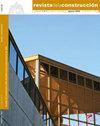Comparative analysis of stress distributions and displacements in rigid and flexible pavements via finite element method
IF 1.4
4区 工程技术
引用次数: 1
Abstract
In many countries of the world, rigid and flexible pavements are widely used. Some of the external factors such as stresses and displacements play major role in the design of pavement layers such as coating, base and sub-base. Although empirical formulas and methods were used in the calculation and design of the pavement layers, complexity of today's transportation engineering demands effectiveness of the empirical formulas were diminished. Nowadays complex problems can be easily simulated and solved thanks to the higher analysis capabilities of the computer-aided softwares. In this study, the stress distributions and displacements were examined under traffic loads in rigid and flexible pavements with different coating layer thicknesses (30 mm, 50mm, 70mm, 100 mm, and 150 mm) by using finite element method. As a result, the vertical displacement in the flexible pavements were obtained as 5% higher than the vertical displacement in the rigid pavements. Based on the stress distribution results, the stress values of flexible pavements were 60% lower than the stress values of the rigid pavements. Moreover, It was determined that the stresses in the rigid pavements remain in the coating layer, while the stresses in the flexible pavements reach the base and sub-base. In addition, regression models have been developed to predict stress and displacements by using layer thicknesses. High correlation and determination coefficient values (> 0.90) were achieved based on the regression analysis both in flexible and rigid pavements.用有限元方法对刚性和柔性路面的应力分布和位移进行比较分析
在世界上许多国家,刚性和柔性路面被广泛使用。一些外部因素,如应力和位移,在铺装层、基层和下层的设计中起主要作用。虽然在路面层的计算和设计中采用了经验公式和方法,但由于当今交通工程的复杂性,经验公式的有效性降低了。如今,由于计算机辅助软件具有较高的分析能力,复杂的问题可以很容易地模拟和解决。本研究采用有限元方法研究了不同涂覆层厚度(30mm、50mm、70mm、100mm和150mm)的刚性和柔性路面在交通荷载作用下的应力分布和位移。结果表明,柔性路面的竖向位移比刚性路面的竖向位移大5%。根据应力分布结果,柔性路面的应力值比刚性路面的应力值低60%。此外,确定刚性路面的应力停留在涂层中,而柔性路面的应力到达基层和亚基层。此外,还建立了回归模型,利用层厚度来预测应力和位移。通过对柔性路面和刚性路面的回归分析,得到了较高的相关系数和决定系数值(> 0.90)。
本文章由计算机程序翻译,如有差异,请以英文原文为准。
求助全文
约1分钟内获得全文
求助全文
来源期刊

Revista de la Construccion
工程技术-工程:土木
CiteScore
2.30
自引率
21.40%
发文量
0
期刊介绍:
The Journal of Construction is aimed at professionals, constructors, academics, researchers, companies, architects, engineers, and anyone who wishes to expand and update their knowledge about construction. We therefore invite all researchers, academics, and professionals to send their contributions for assessment and possible publication in this journal. The publications are free of publication charges.
OBJECTIVES
The objectives of the Journal of Construction are:
1. To disseminate new knowledge in all areas related to construction (Building, Civil Works, Materials, Business, Education, etc.).
2. To provide professionals in the area with material for discussion to refresh and update their knowledge.
3. To disseminate new applied technologies in construction nationally and internationally.
4. To provide national and foreign academics with an internationally endorsed medium in which to share their knowledge and debate the topics raised.
 求助内容:
求助内容: 应助结果提醒方式:
应助结果提醒方式:


